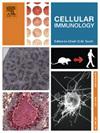CD133过表达和TGF-β补充在卵巢癌细胞系肿瘤发生中的协同作用
IF 2.9
4区 医学
Q2 CELL BIOLOGY
引用次数: 0
摘要
卵巢癌(OC)是一种高致死率的妇科恶性肿瘤,主要原因是化疗耐药和肿瘤复发。肿瘤干细胞(Cancer stem cells, CSCs)可能与化疗耐药有关,已成为新的治疗靶点。在这项研究中,我们旨在建立一个肿瘤微环境(TME)中具有良好再现性的三维(3D) OC模型。结果我们观察到,在OC球诱导过程中,与CSC特性相关的小生境环境以cd133阳性细胞的存在为特征。与2D单层培养相比,癌症相关成纤维细胞(CAF)集成的3D多细胞OC模型更能再现增强的致瘤性和细胞因子介导的侵袭性。还获得了3D OC模型的化学耐药性。此外,具有3D ca -集成OC球的已建立的异种移植物模型的体内生长表现出适当的干性特征和肿瘤发生的全部癌症相关标志物。CD133基因转导至OC细胞后,基因本体(GO)和KEGG通路富集分析显示,细胞因子介导的内皮间充质转化(EMT)可能是化疗耐药和肿瘤进展的原因,PAR1、CXCR4和PD-L1表达也增强。此外,我们发现靶向PAR1的工程化嵌合抗原受体(CAR)-T细胞对CD133过表达的化疗耐药OC球具有显著的体外细胞毒性。综上所述,我们的研究结果表明,CD133-3D OC球重现了模拟真实的晚期OC病情的TME,可以作为体外和体内实验机制验证的有用平台,用于研究OC化疗、免疫治疗和细胞治疗,以发现新的治疗方法。本文章由计算机程序翻译,如有差异,请以英文原文为准。
A synergy of CD133 overexpression and TGF-β supplementation in tumorigenesis of ovarian cancer cell lines in a three-dimensional sphere forming model
Background
Ovarian cancer (OC) is a highly lethal gynecological malignancy, mainly due to chemoresistance and tumor recurrence. Cancer stem cells (CSCs) may be responsible for chemoresistance, and CSC has become a new target for treatment. In this study, we aimed to develop a three-dimensional (3D) OC model with well-recapitulated stemness in the tumor microenvironment (TME).
Results
We observed that the niche-like environment associated with CSC properties is characterized by the presence of CD133-positive cells during OC sphere induction. The cancer-associated fibroblast (CAF)-integrated 3D multicellular OC model recapitulates enhanced tumorigenicity and cytokine-mediated invasiveness more than the 2D monolayer culture. Chemoresistance of the 3D OC model is also acquired. In addition, the in vivo growth of an established xenograft model with a 3D CAF-integrated OC sphere exhibits proper stemness features and full cancer-associated markers for tumorigenesis.
After transduction of the CD133 gene into OC cells, gene ontology (GO) and KEGG pathway enrichment analyses reveal that cytokine-mediated endothelial mesenchymal transition (EMT) is possibly responsible for chemotherapy resistance and tumor progression, and enhanced PAR1, CXCR4, and PD-L1 expressions are also observed. In addition, we found that engineered chimeric antigen receptor (CAR)-T cells targeting PAR1 demonstrated significant in vitro cytotoxicity toward chemoresistant OC sphere with CD133 overexpression.
Conclusions
Taken together, our results show that a CD133-3D OC sphere recaptures TME that mimics a real late-stage OC condition, and it can act as a useful platform with mechanism-verifying in vitro and in vivo experiments in researching OC chemotherapy, immunotherapy, and cell therapy to discover new therapeutic approaches.
求助全文
通过发布文献求助,成功后即可免费获取论文全文。
去求助
来源期刊

Cellular immunology
生物-免疫学
CiteScore
8.20
自引率
2.30%
发文量
102
审稿时长
30 days
期刊介绍:
Cellular Immunology publishes original investigations concerned with the immunological activities of cells in experimental or clinical situations. The scope of the journal encompasses the broad area of in vitro and in vivo studies of cellular immune responses. Purely clinical descriptive studies are not considered.
Research Areas include:
• Antigen receptor sites
• Autoimmunity
• Delayed-type hypersensitivity or cellular immunity
• Immunologic deficiency states and their reconstitution
• Immunologic surveillance and tumor immunity
• Immunomodulation
• Immunotherapy
• Lymphokines and cytokines
• Nonantibody immunity
• Parasite immunology
• Resistance to intracellular microbial and viral infection
• Thymus and lymphocyte immunobiology
• Transplantation immunology
• Tumor immunity.
 求助内容:
求助内容: 应助结果提醒方式:
应助结果提醒方式:


